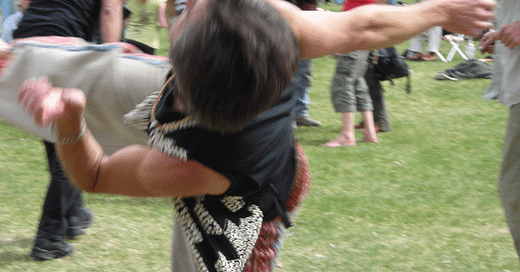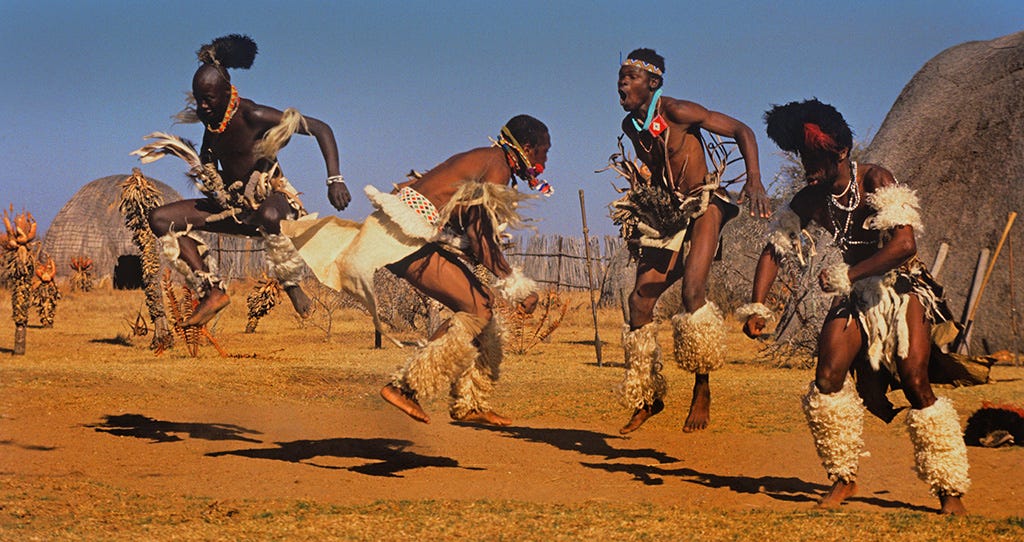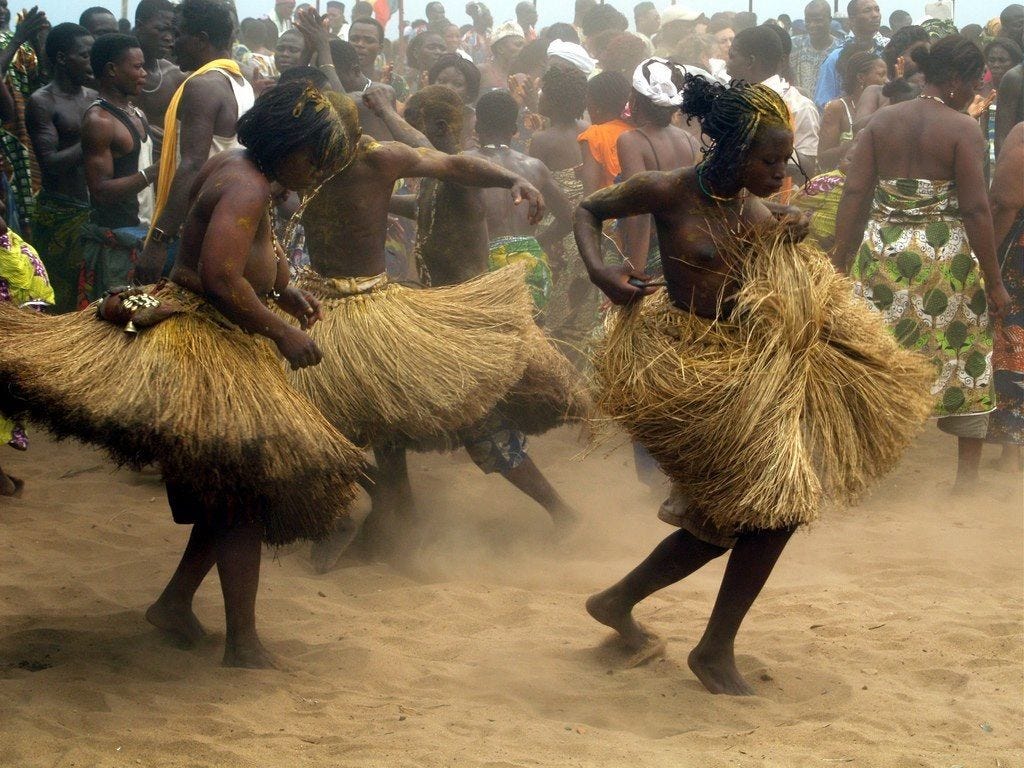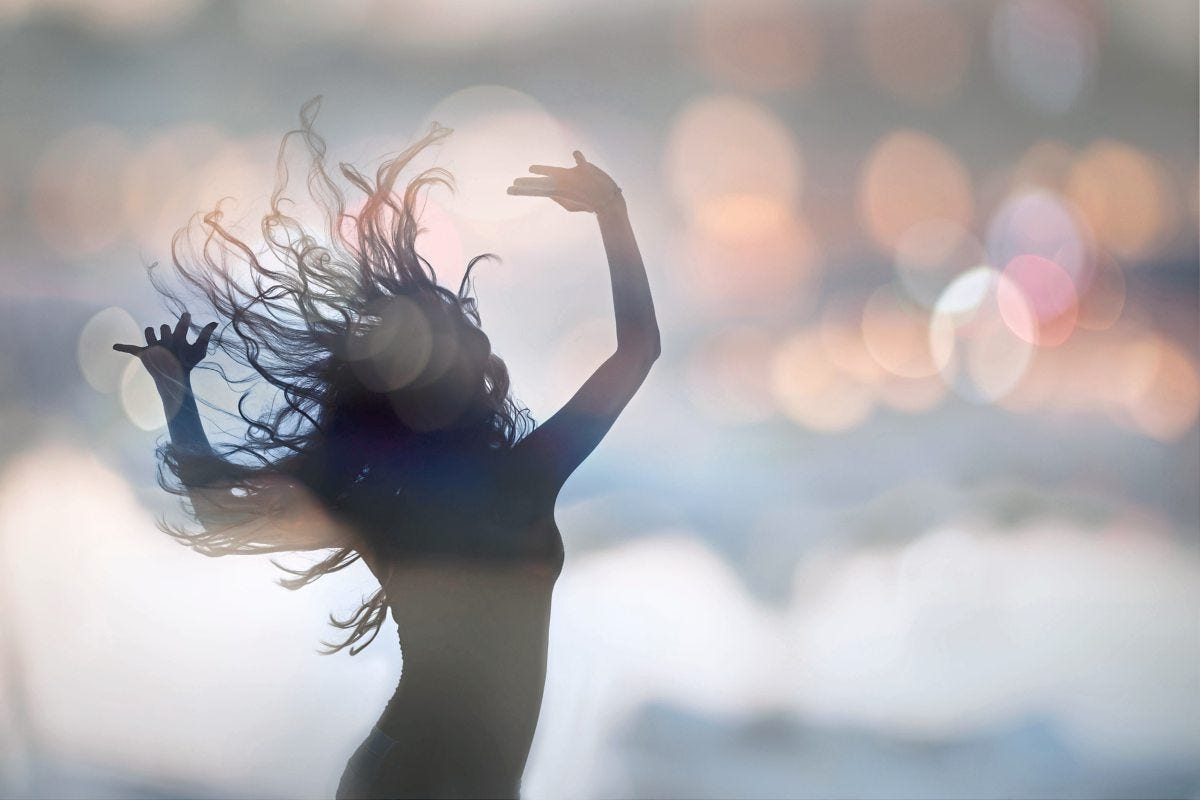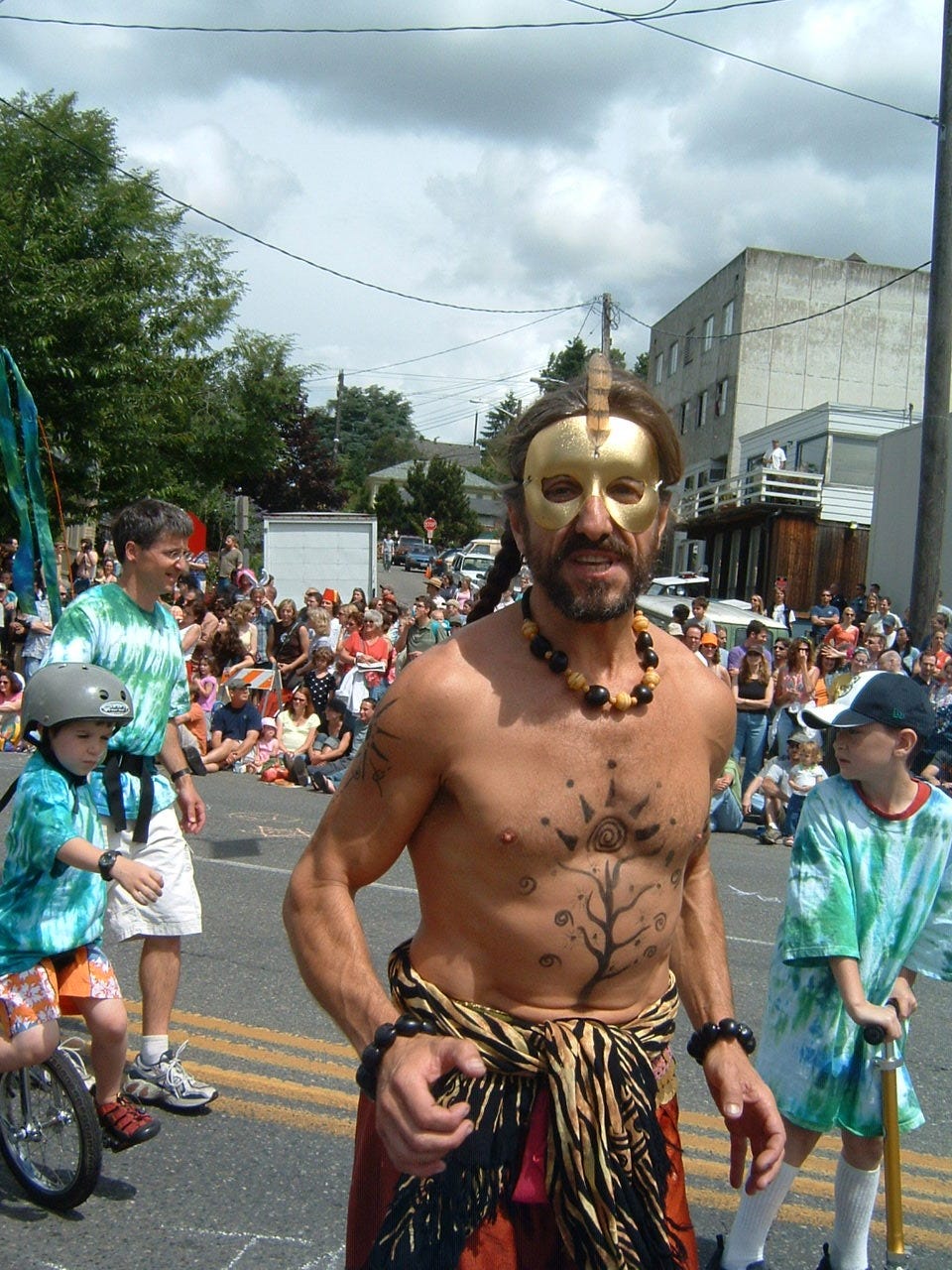A friend at dance recently asked what it truly feels like to experience the trance effect of African drums. Though I’d been exploring this phenomenon intuitively for years, I’d never tried to articulate it—until now. After a moment of reflection, I said it feels like leaning against a heavy door that suddenly gives way. The momentum of resisting surrender to the music, once released, can hurl you into moments of unbelievable freedom and ecstasy.
I have no formal dance training—classical, modern, or ethnic. I’ve always loved dancing, though there were times when emotional blocks kept me from fully embracing music and movement. I’ve attended many African and Middle Eastern celebrations, marveling at how dancers—young, old, large, small—seemed to fly, as if carried by invisible threads spun by the music. The master drummers like puppeteers, holding dancers in a magical web of rhythm.
“Wow, if only I could do that,” my Western conditioning would whisper. “They’ve been dancing since childhood—it’s in their genes.” That mindset robbed me of the freedom to truly enjoy my body and the communal unity others seemed to share.
Not anymore.
Imagine my surprise when, one day, I found myself—for a fraction of a second—inside that same space of surrender and ecstasy. What had I released to get there? And what in the music opened that door? While this trance-like state is well known in indigenous cultures, scientists now explain it through the concept of polyrhythmic music.
Our bodies, despite being mapped by science, remain profoundly mysterious. In my movement journey—and life in general—I’ve come to see my purpose as remembering my true self, peeling away mental obstructions, and unveiling the magnificence already within. From this perspective, I already know. I’ve simply forgotten, led to believe I need more technique, more knowledge.
But over and over again, I’ve been shown: everything is already in our bones and cells. With enough trust and patience, I believe we can recall many things we think we don’t know, things no one can teach us, or things we feel incapable of learning or doing.
So what does this mean for movement? It means that a genuine desire to discover and surrender to the music can yield astonishing results. The main challenge is navigating our self-judgment and conditioning. For clarity, I’ll call this resistance the wall.
My heart often aches for those stuck behind it. It’s like watching poor people window-shopping at Christmas, with no hope of affording such splendid clothes or gadgets. I also feel that this wall—personal and collective—interferes with my own trance. This is why indigenous rituals are so effective: the collective intention creates openings in the wall that’s inherent to our human condition.
So how do we begin to dissolve it? How do we support one another in moving through it—and bring back the treasures from the other side: joy, timelessness, and mystery? How do we re-teach ourselves what we’ve forgotten beneath the noise and distractions of the industrial age? How do we reclaim our birthright to be playful, foolish, and fully alive?
I would answer these questions by inviting you to release society’s obsession with perfection. There is no “right” way. Forget about style and technique. Just meet the music with your body—all of it. Go where the rhythm lives. Let your intuition lead. Go with friends. Share your fears. Support each other with patience and love.
Like in meditation, observe your mind’s chatter and judgments—both of yourself and others. Notice how these thoughts shape your movements. Then reaffirm your commitment to freedom. Your intention will gradually bring you closer to the wall. You’ll begin to feel its gooey texture—and one day, it will give way.
This approach will inevitably stir emotional baggage. You may grieve, rage, or dance seductively. Let it all unfold. As in healing work, facing what we fear reveals what we’re ready to release. Dance with your demons—literally. When you invite them to move with you, they stop holding you back. They might even start cheering you on.
With willingness and curiosity, I’ve come to recognize the texture of my own wall. It shifts and reveals new layers. I try to meet whatever arises. I notice how my desire to "look good" restricts my movements. Still, I take risks—I show off, I break patterns. Spirit doesn’t wait behind well-rehearsed moves. It hides in the ridiculous, the disjointed, the unexpected. It arrives when I fully commit, even for a split second.
And when it does, I know. The sensations are beyond my usual range. The balance, the connectedness—it startles me. It delights and scares me all at once. Again, I’m in that paradox.
Once I cross into trance—or ecstasy, or whatever you call it—I find it difficult to stay for more than a few seconds. It becomes an interplay between the known and the unknown, a dissolving and reassembling of my perception. Remarkably, it is invigorating. The only effort is in letting go. Once there, something else takes over. It dances me. I feel weightless. My movements expand. My senses sharpen. On the other side of the wall, there is no effort—only fire, joy, and life.
Fear pulls me back. It snaps me into the known like a rubber band. But I’ve learned that in certain environments—night rituals in nature, large crowds, spaces where no one is watching—I can stay in that state longer.
Choose your environments wisely. Hide in dark corners. Wear costumes. Dance where no one knows your name. Be foolish far from home. Trick yourself into freedom. Be unreasonably imaginative. Grant yourself outrageous permission.
And dance barefoot. I think that’s one of the secrets.
So—just now—I went through another wall: the writer’s wall. The same one I’ve been describing all along. I didn’t think I could write. I was terrified to expose my thoughts, scarred by my school years and paralyzed by fear of judgment. I avoided the page with all kinds of reasons and excuses. But once I surrendered, something bigger than me took over. The words flowed. It was effortless. Nourishing. I followed the impulse and let the spirit do its work.
For more on this subject, read: The Rhythm of Spirit Possession: An Entrancing Legacy

